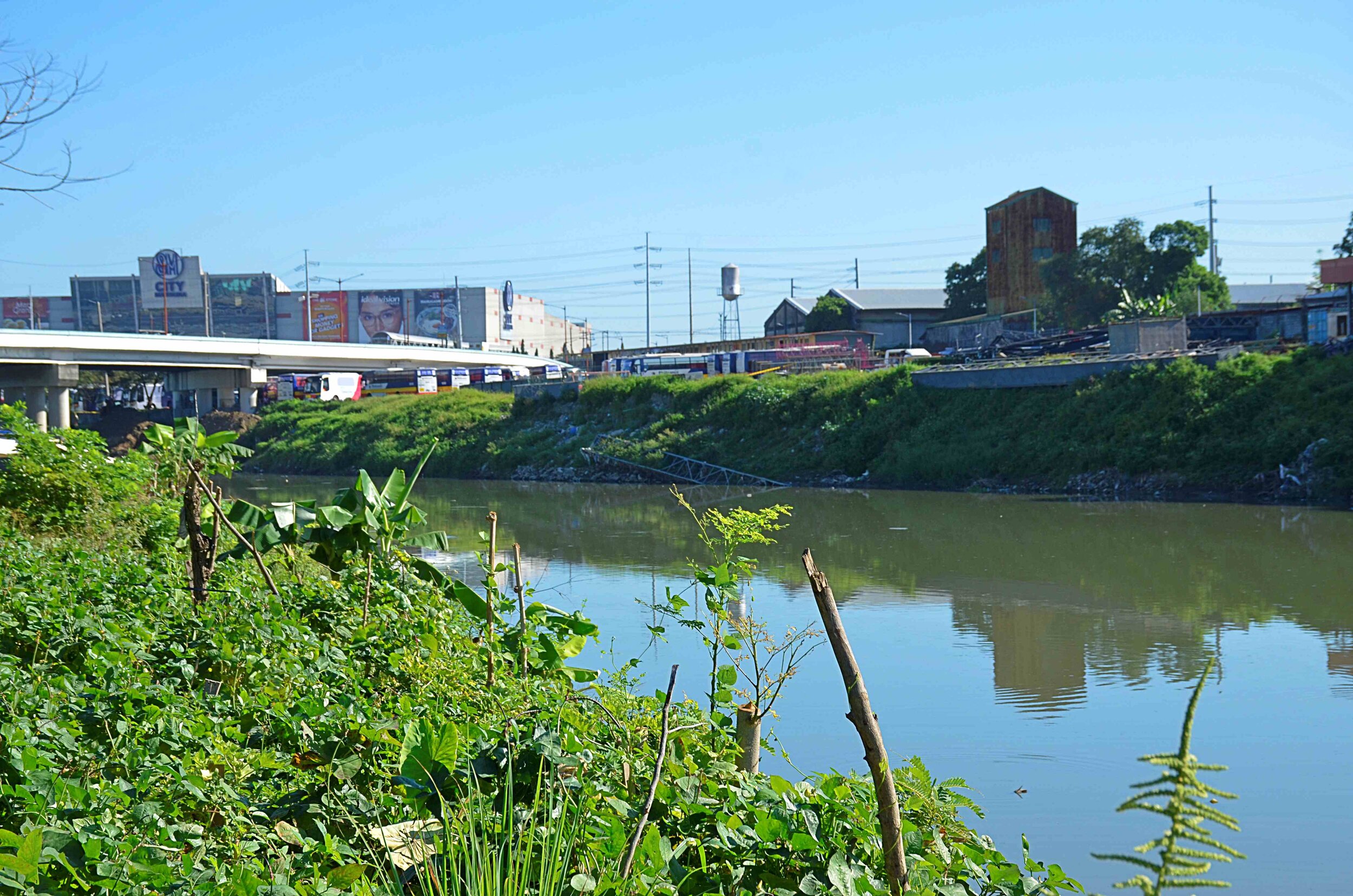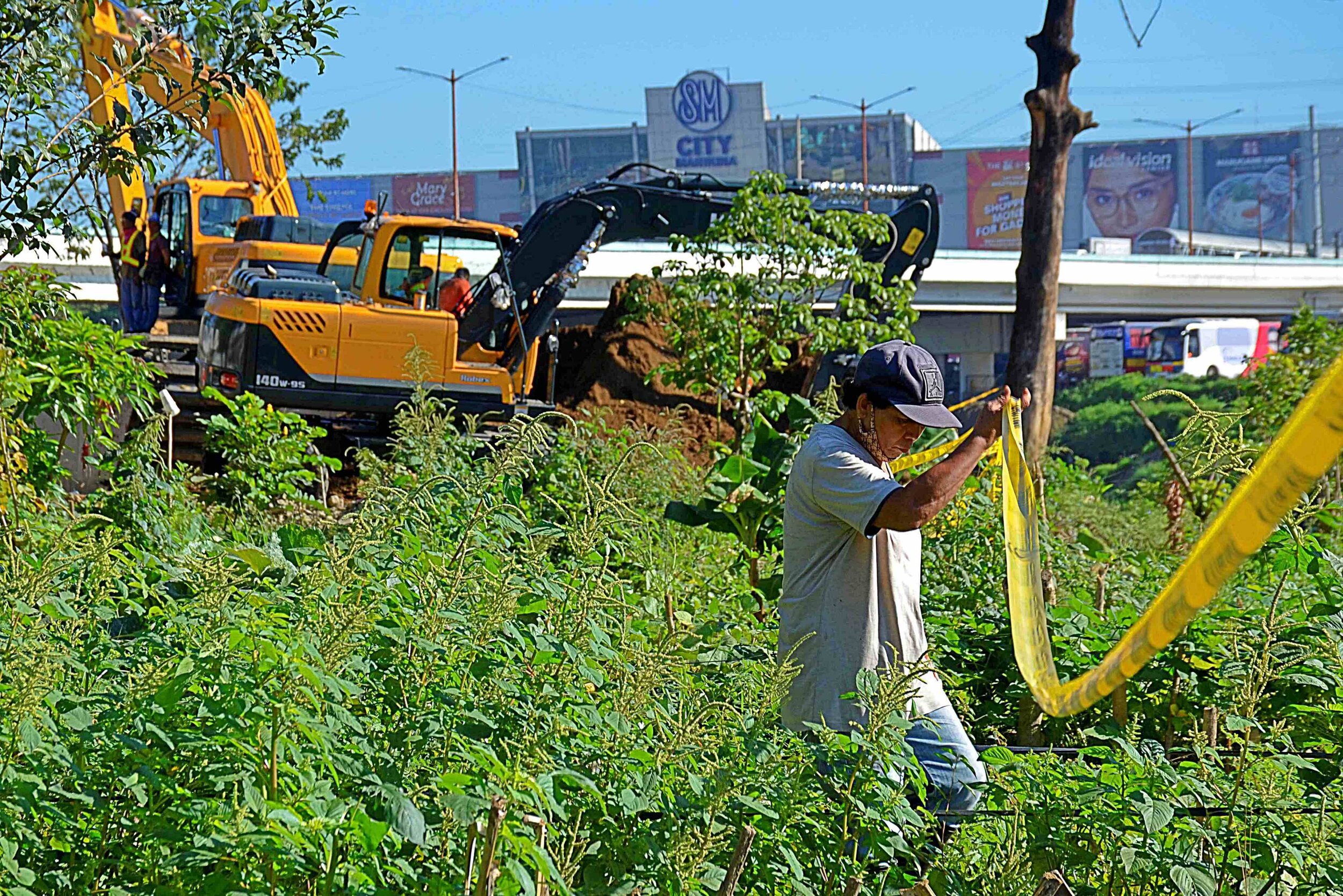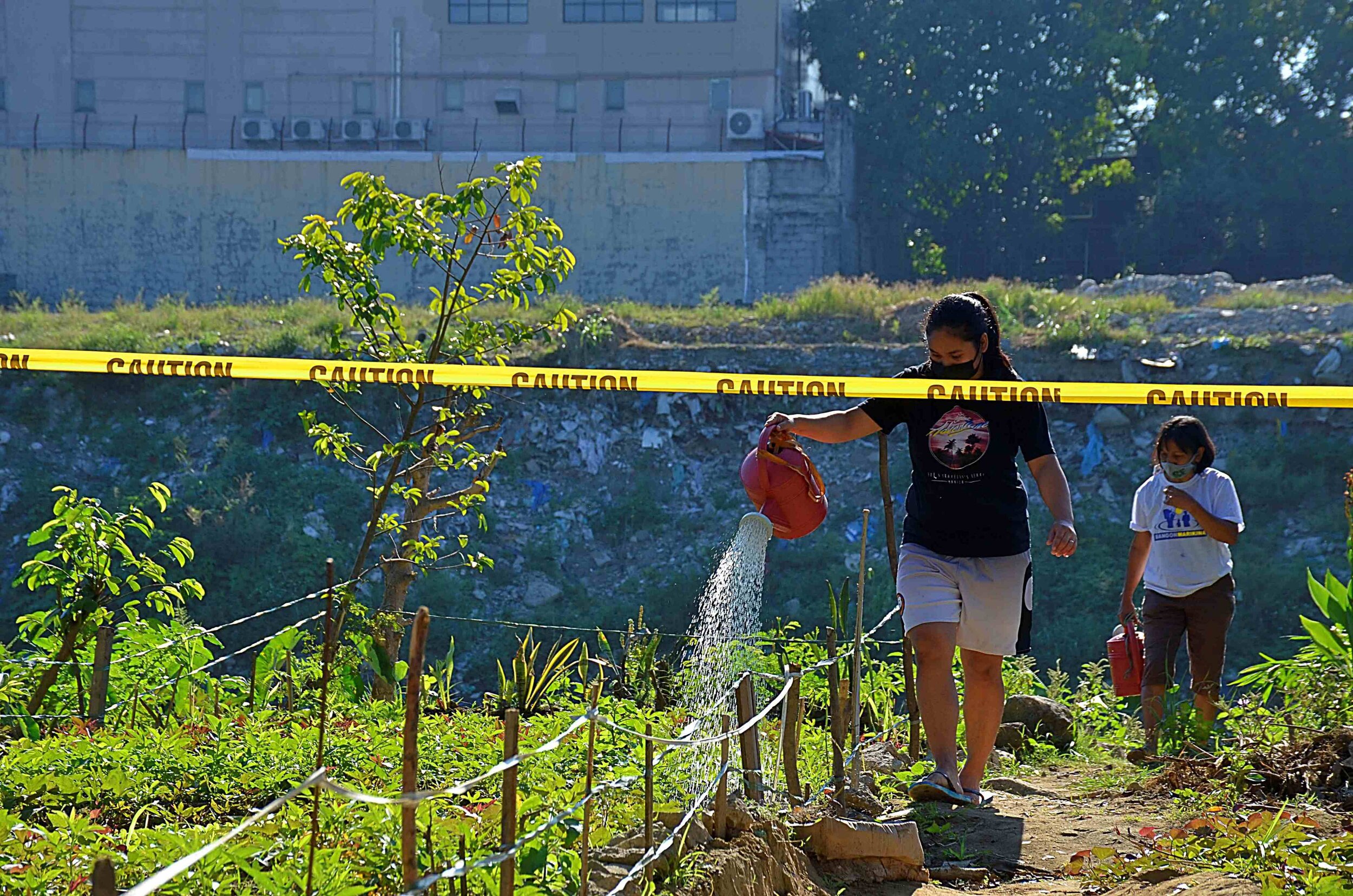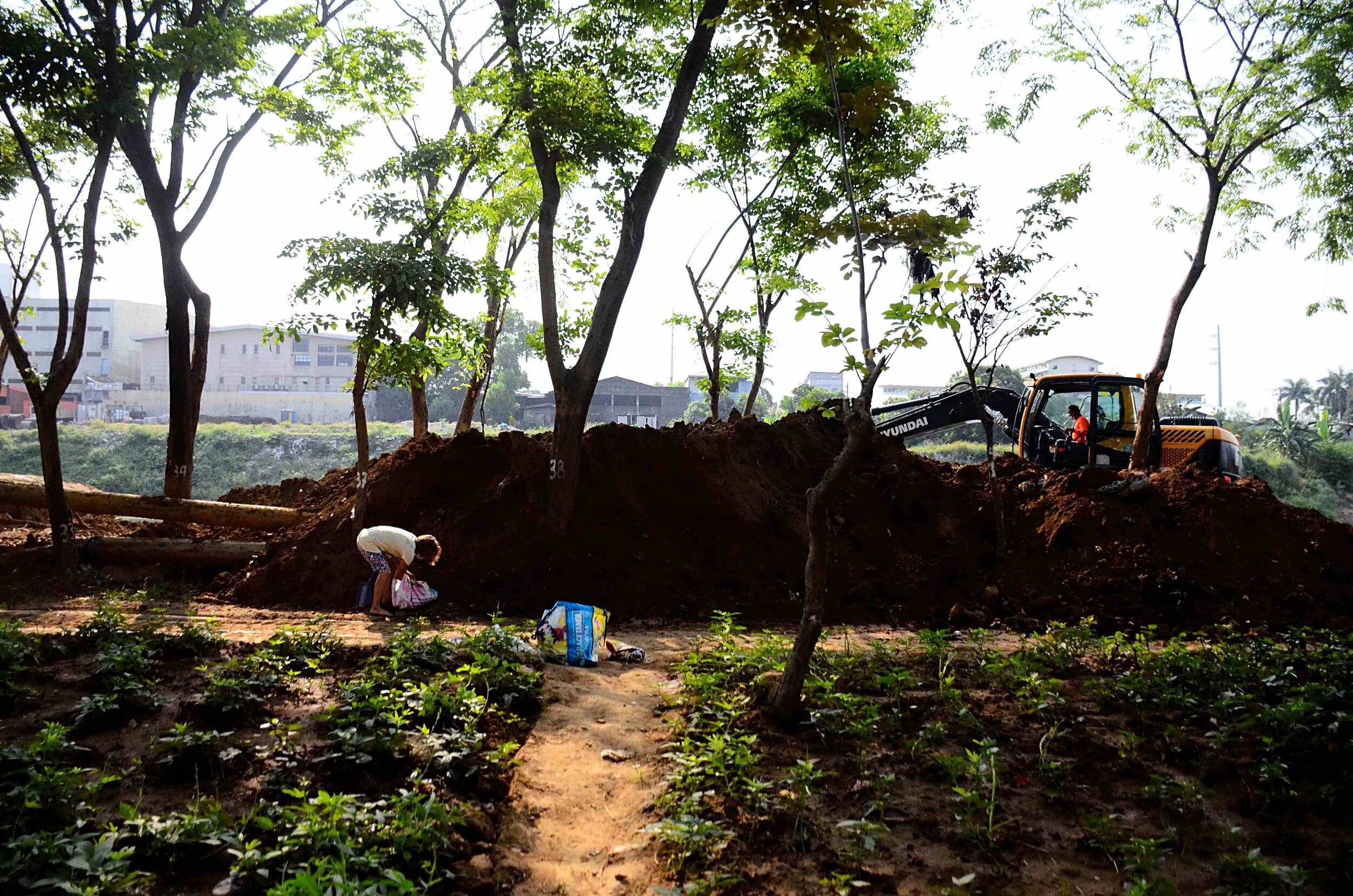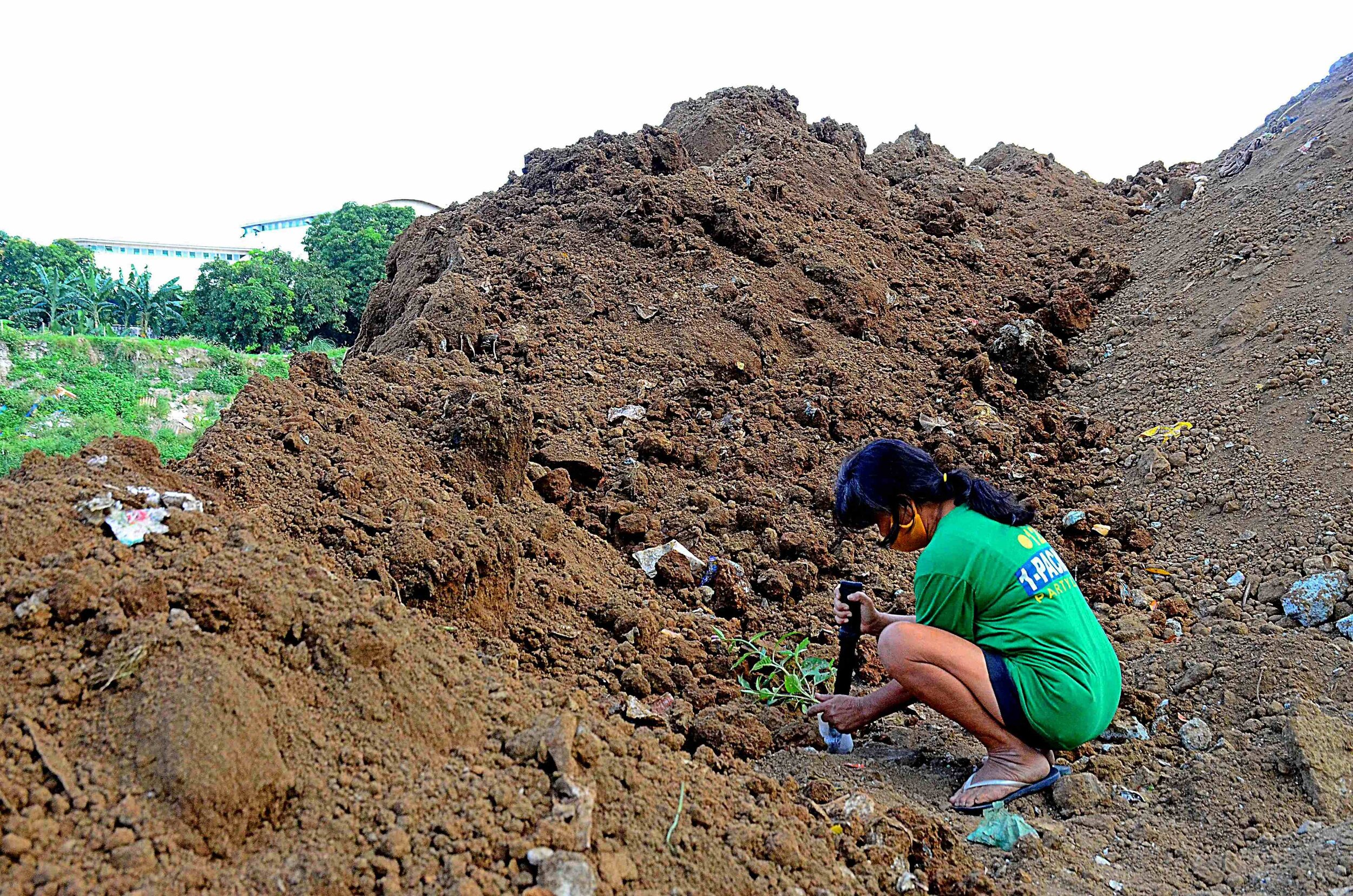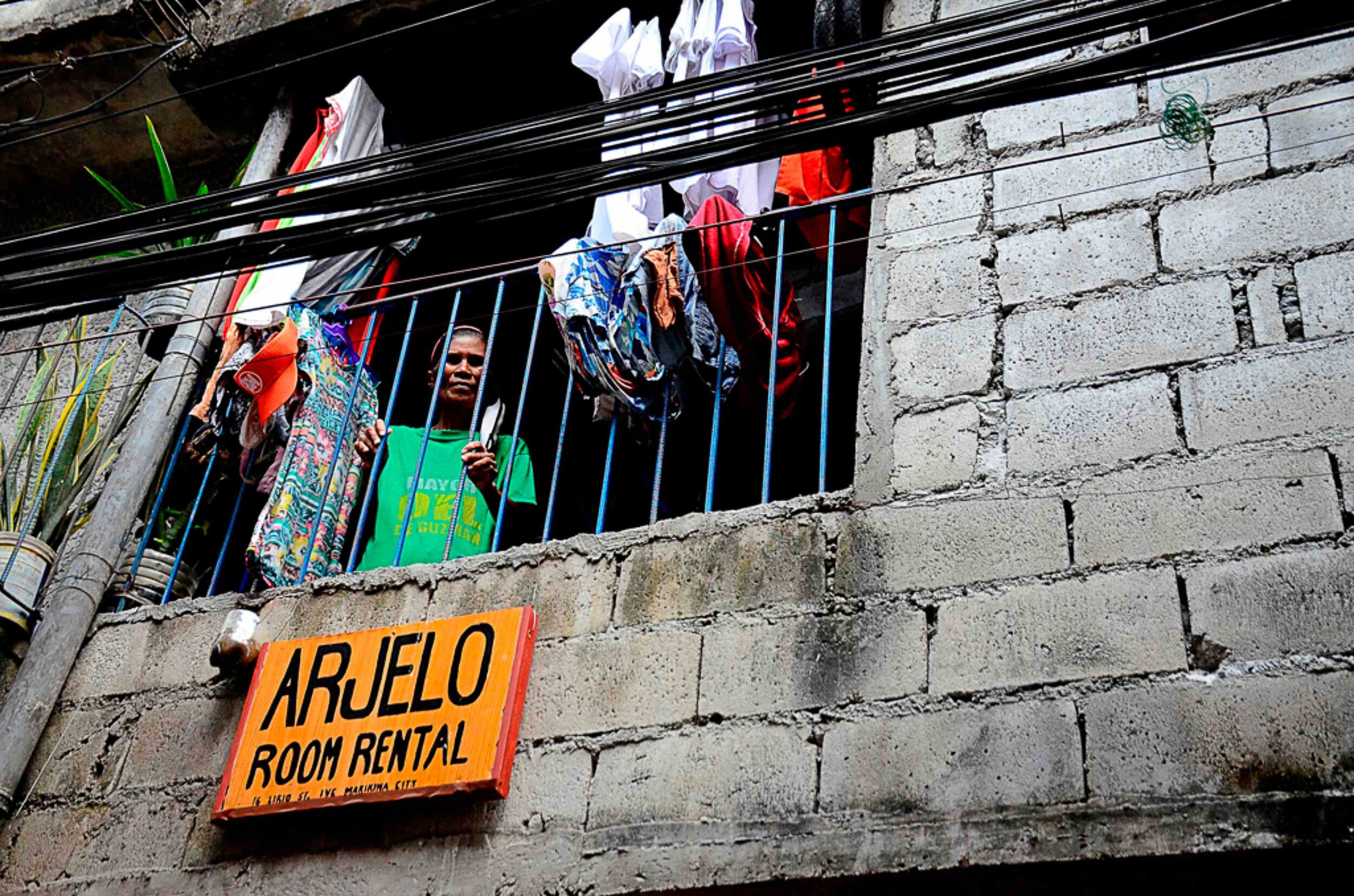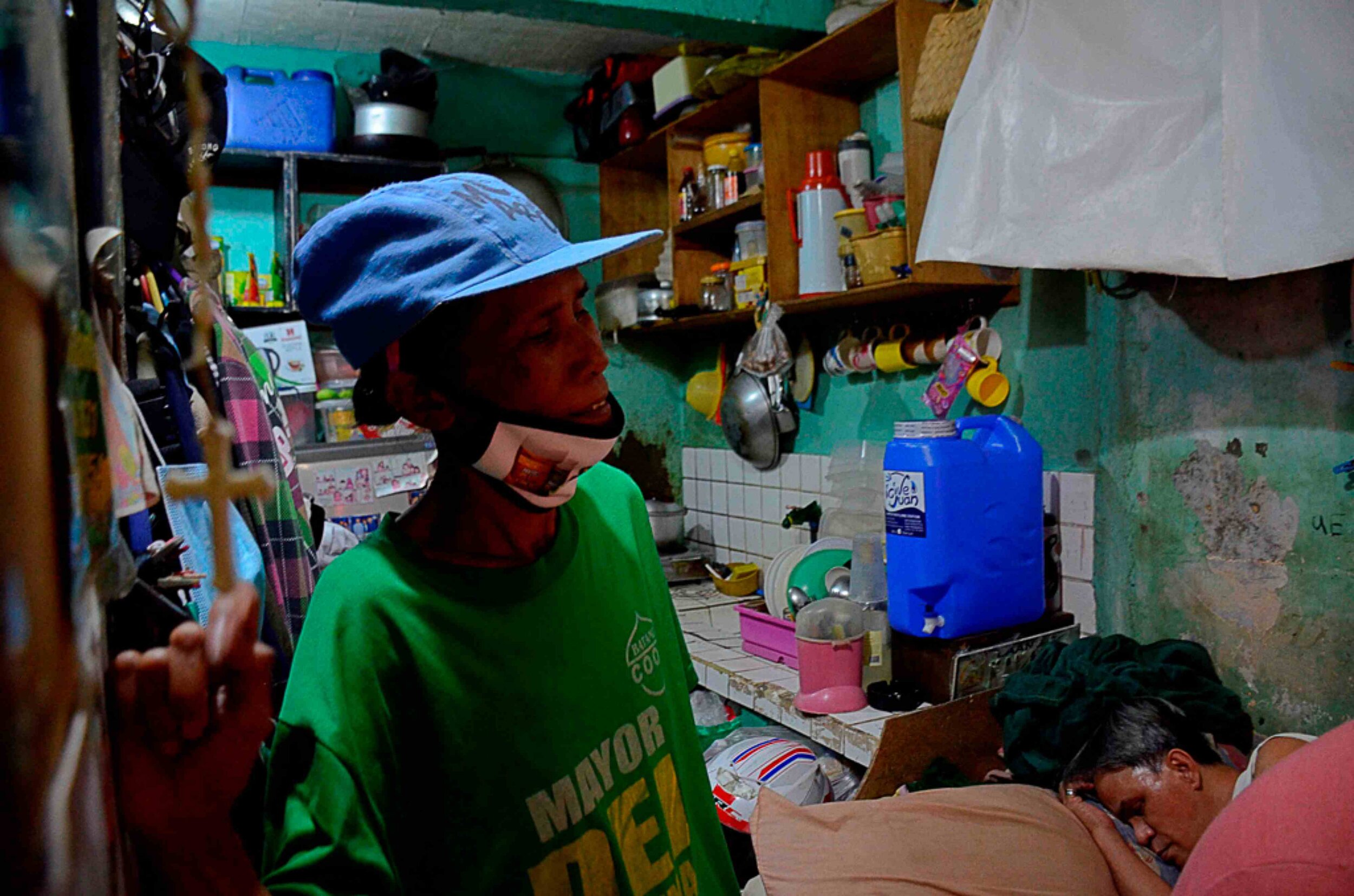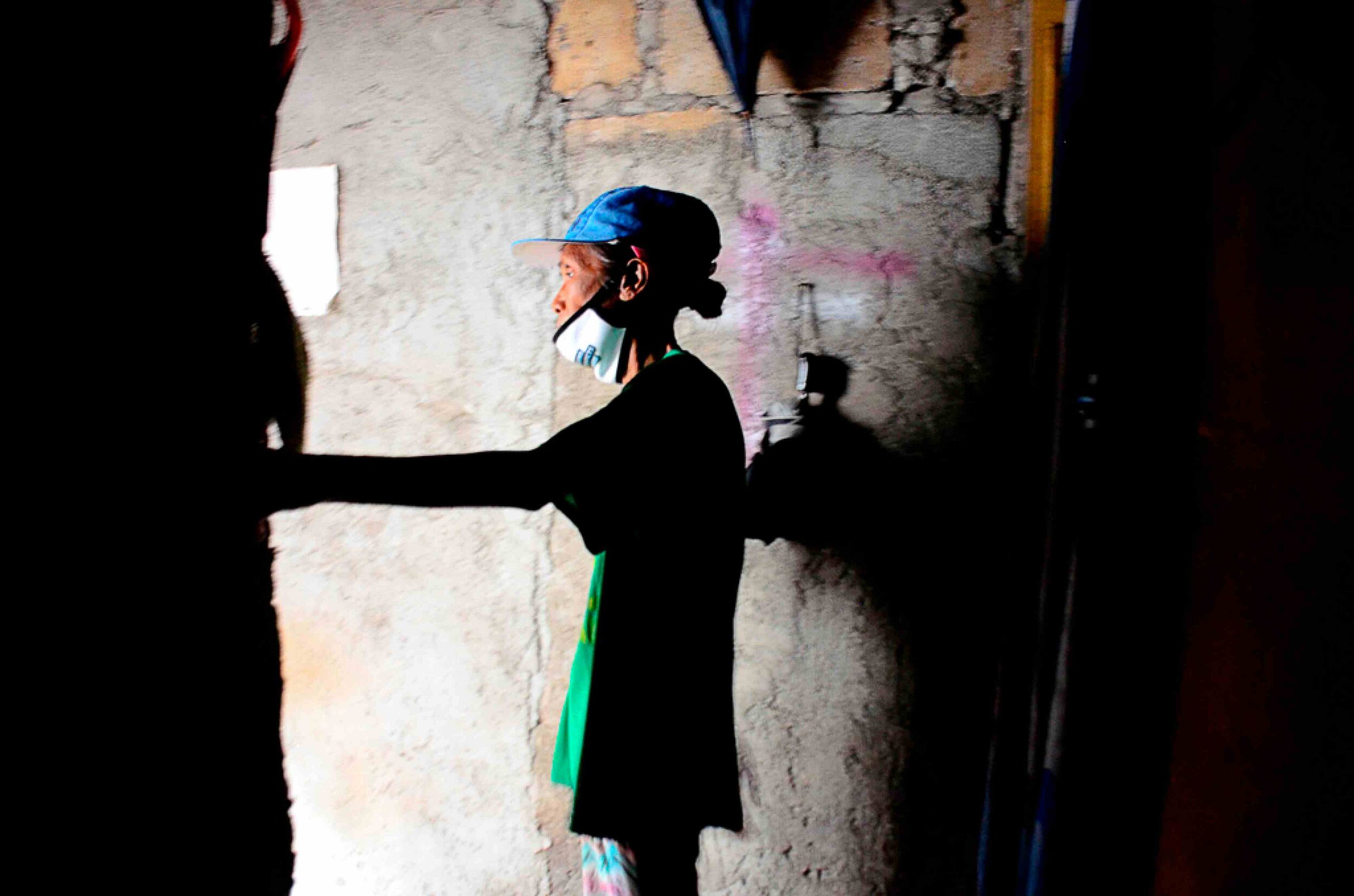Paradise Lost: Decades-Old Urban Garden Sinks Into a River
PHOTOS AND TEXT BY
Sharlene Festin
Residents of ‘Little Holland’ on the Marikina riverbank decry the loss of their precious plot of land, which used to supply them with vegetables. The urban garden is no more because of the need to dredge the river to help ease flooding during the rainy season. Residents like Lisa Villasor, 66, are upset and don’t want to plant again even if the city government gives them another plot of land.
Crossing the FVR Road in Marikina City, one steps into an oasis. Tall, decades-old trees filter sunlight, casting dappled shadows on tufts of grass. A few more feet into this shaded, parklike area and you come across vegetable patches—plots of sweet potato tops, radishes, native bok choy. And then you hear it, the sound of heavy machinery rumbling close by. You then realize that this isn’t exactly paradise.
A few meters away from this green space is Barangay IVC, also known as “Olandes” or “Little Holland,” because of the brightly colored residential facades that mark the community’s boundary. With a population of about 16,000, its residents are mostly daily wage earners or small business people in the informal economy. When the Covid lockdown was imposed in March 2020, hundreds lost their jobs. The floodwaters of Typhoon “Ulysses,” which left an estimated P20 billion in damage to life and property in November 2020, dealt the Marikina residents another heavy blow.
The vegetable patches, known as “The Garden” to Olandes residents, have existed for decades. Long-time residents, some of whom have lived in the area since the 1970s, attest to how this strip of fertile land along the riverbank measuring about 400 square meters has saved them from going hungry many times and has provided a means of livelihood to those who tended it.
But The Garden is no more. In a bid to curb massive flooding during the rainy season, the Marikina city government and the Department of Environment and Natural Resources (DENR), under the latter’s Task Force “Build Back Better,” began the Marikina River dredging project on Feb. 17, 2021 with the goal of returning the river to its original width of 90 meters and depth of 10 meters. The first site for dredging was the area where The Garden stood.
Losing her vegetable plot has hit Lisa Villasor, 66, hard. She sank into depression and spends most days wandering aimlessly on the riverbank. She has been growing vegetables in The Garden since she settled with her husband, Willy, in Olandes in the early 1980s, selling her harvest to neighbors and taking some home for food. They live with two of their three children in a tiny, rented room. Willy works as a barangay (village) staff member earning about P10,000 a month and about P8,000 of his pay goes to rent and utilities, leaving the family with just P2,000 or P66 a day to live on. She worries about feeding her family and is anxious about the future.
“Iyang pagtatanim ko, kapag walang trabaho ang asawa ko, 'yan ang bumubuhay sa amin. ‘Pag wala kaming pambiling ulam, ang tanim ko sapat na pangkain. Meron ako noon mga P200 hanggang P300 araw-araw kahit papaano,” Lisa said.
(That vegetable plot kept us alive when my husband was out of work. When we didn’t have money to buy food, that was enough to feed us. I managed to earn P200 to P300 every day.)
While residents who tended plots in The Garden understand the reasons for the dredging, they ask why it was their side of the river that was dredged first when there were other areas that encroached on the riverbank.
Marikina Councilor Manuel Sarmienta, who represents the city’s first district, explained that the area where The Garden stood was public land while the area on the other side of the riverbank had been titled, making it difficult for the local government to dredge without the owner’s consent. He said the DENR was investigating how several plots of land in other areas along the riverbank were illegally titled.
“That’s the sad thing about it,” Sarmienta said. “We explained the situation to the residents and told them we had to do it for the safety of all people who live close to the riverbank as well as make way for any future development in the area. The local government understands the residents’ concern on the loss of their means of food production and livelihood and we are finding ways to assist them.”
Lisa, however, does not put too much weight on government assistance, and believes whatever the officials dole out will not last long. She wants to plant and grow food again, because it made her feel useful.
When asked if she would plant again if a plot was made available by the local government, Lisa paused, then shook her head.
“Ayaw ko na. Taon mong inalagaan, kukunin lang. Mahirap talaga ang maging mahirap. Kahit taon mong binungkal, dahil hindi sa iyo, mawawala. Ang kakambal namin ngayon ay gutom.”
(I don’t want to do it anymore. It’s very difficult to live in poverty. They’ll take the land from you even if you tended it for years, because you don’t own it. Now we’ll have to live with hunger.)
This story is one of twelve photo essays produced during the Capturing Human Rights fellowship, a seminar and mentoring program jointly undertaken by the Philippine Center for Investigative Journalism and the Photojournalists' Center of the Philippines.


